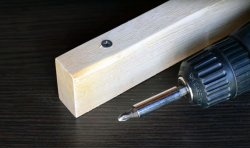How to make a tool handle from a plastic pipe
Sooner or later, hand tools wear out. Trowels, scoops, chisels or knives, all this equipment that is familiar to us suffers from damaged handles. But replacing them is easy and does not take long. At the same time, you don’t have to cut out wooden halves for the handle and then think about how to join them together.
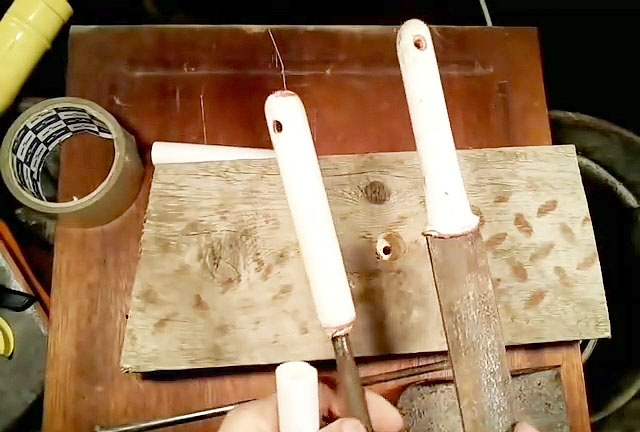
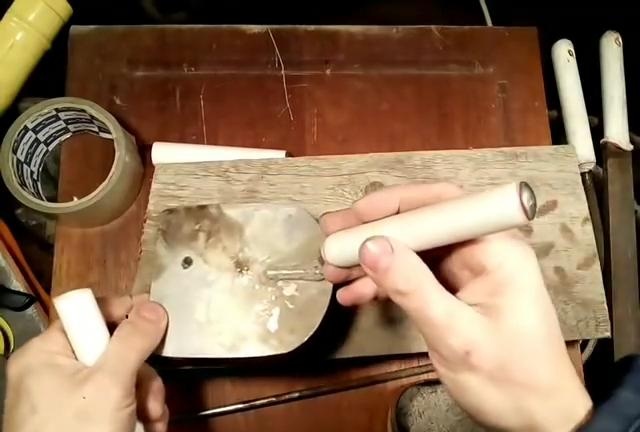
Everything is much simpler! To restore this part of the tool, you only need a piece of polypropylene pipe. The handle will eventually be round, and this is another useful feature of this homemade product. Shall we get started?
From the tools we will need a drill, a drill according to the diameter of the handle of the tool being processed, and a feather drill, respectively, according to the diameter of the pipe-handle itself. We select the length of the plastic pipe to match the width of our brush and the required tool. You can also prepare a bolt with a round head, similar in diameter to the pipe.
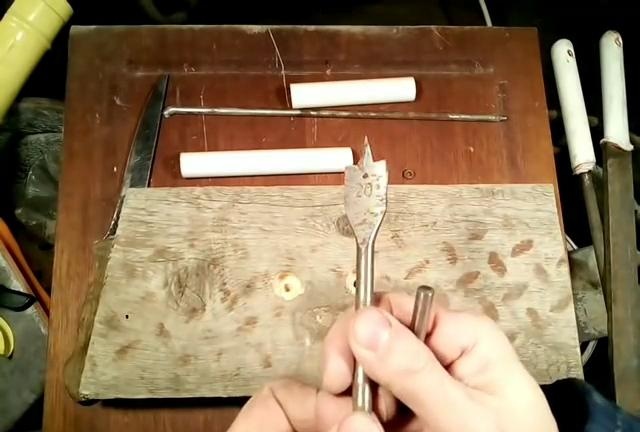
First, let's prepare a wooden frame for our workpiece. Using a feather drill, we make a depression of about 1-1.5 cm on the surface of the board, and then drill through the center of the hole for the handle of the tool. In this simple way, a piece of pipe with a handle can be firmly fixed in the board.
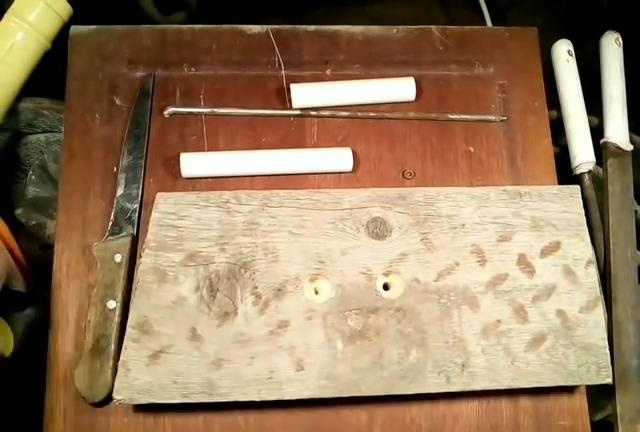
Next, you need to prepare polypropylene for melting. The most unnecessary waste from scraps, defective fittings or dismantled outdated plumbing will do. Used sealed containers are suitable for melting containers. We insert the handle of the tool and the pipe into the holes on the wooden frame. You can immediately place several test specimens by adjusting the depth of planting of the handle in the handle.
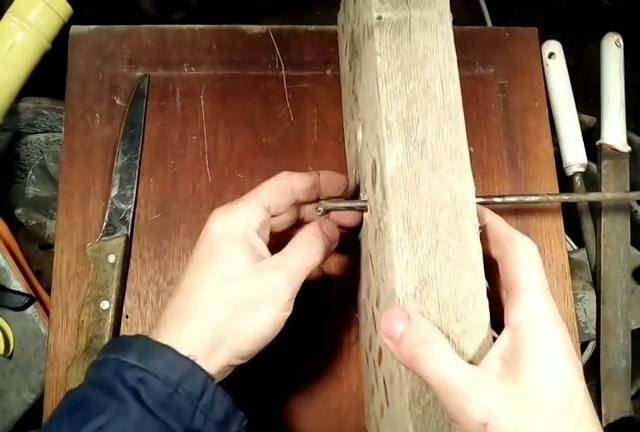
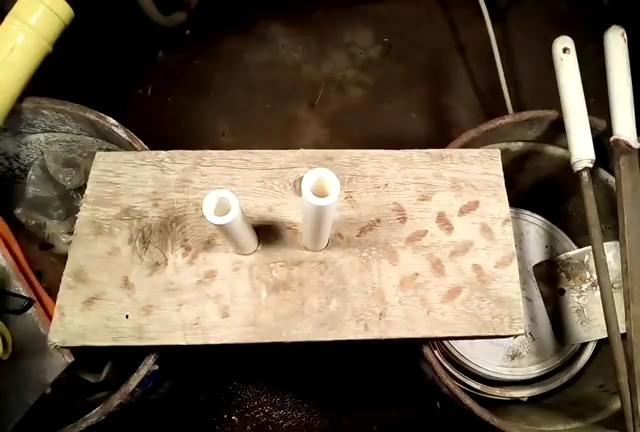
After this, we pour molten polypropylene inside the pipe. It cools quite quickly and eventually shrinks somewhat.
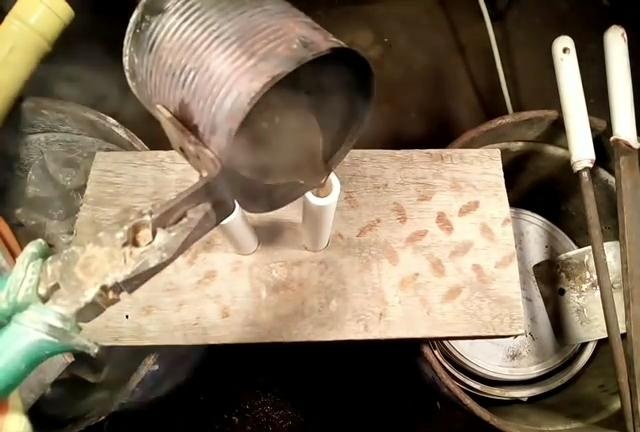
While the casting has not hardened, the end of the handle can be plugged with an ordinary bolt with a smooth round head. After cooling, remove the workpiece from the bed.
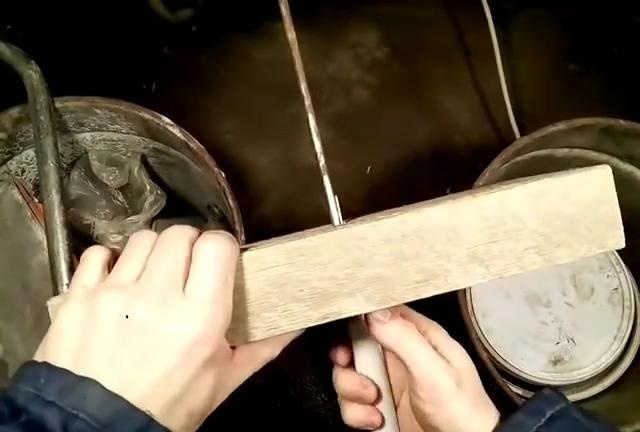
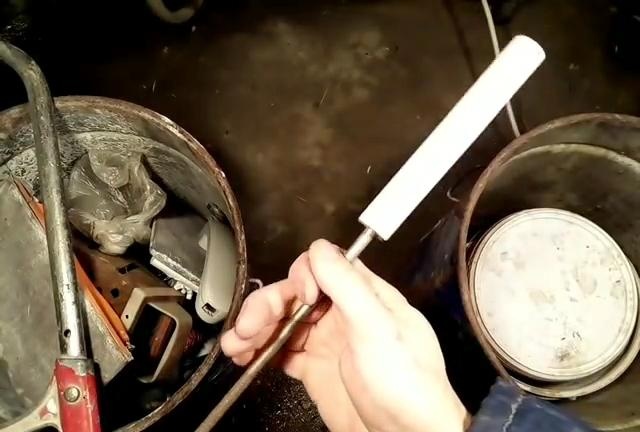
If the handle turns out to be too long, you can always cut it with a hacksaw. The cooled handle can be easily processed with a knife and sandpaper.

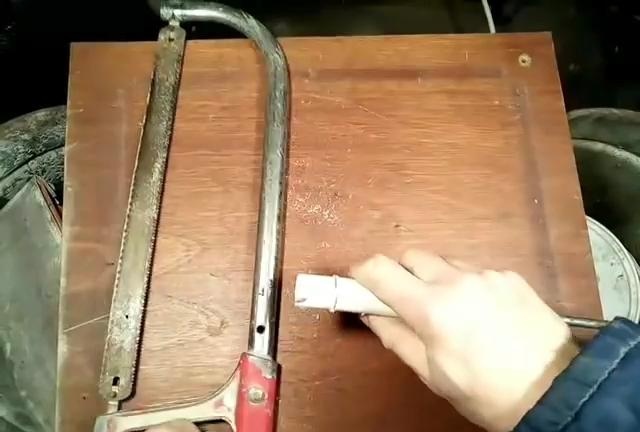
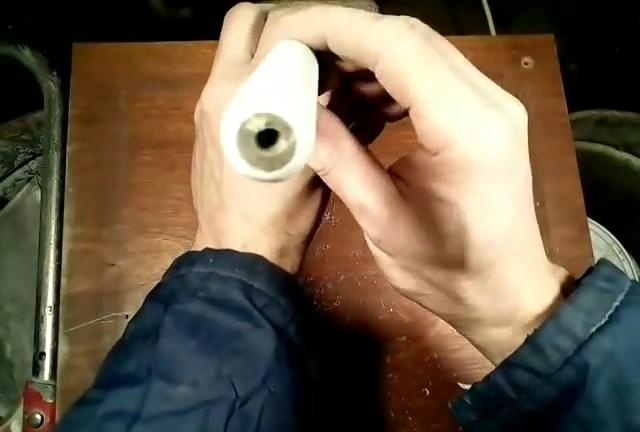
Such a handle is not afraid of temperature changes, water and even hammer blows!
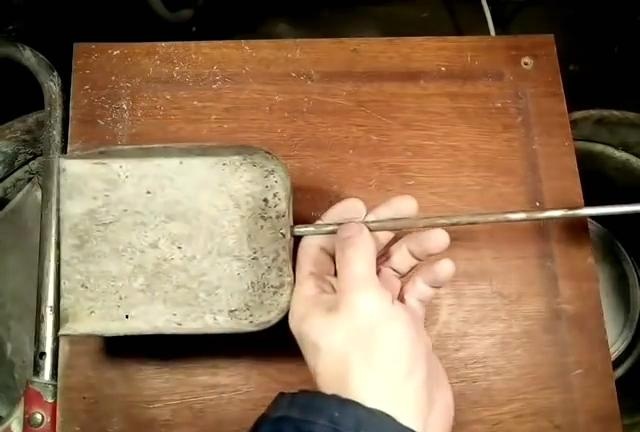
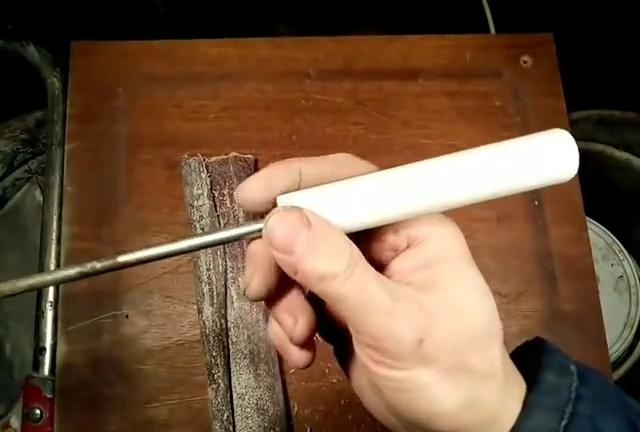



Everything is much simpler! To restore this part of the tool, you only need a piece of polypropylene pipe. The handle will eventually be round, and this is another useful feature of this homemade product. Shall we get started?
Necessary resources for work
- A piece (or several) of polypropylene pipe without reinforcement (foil or fiberglass), diameter - 20-25 mm.
- Container for melting polypropylene.
- A piece of board 40-50 mm thick.
From the tools we will need a drill, a drill according to the diameter of the handle of the tool being processed, and a feather drill, respectively, according to the diameter of the pipe-handle itself. We select the length of the plastic pipe to match the width of our brush and the required tool. You can also prepare a bolt with a round head, similar in diameter to the pipe.

Making a handle from a plastic pipe
First, let's prepare a wooden frame for our workpiece. Using a feather drill, we make a depression of about 1-1.5 cm on the surface of the board, and then drill through the center of the hole for the handle of the tool. In this simple way, a piece of pipe with a handle can be firmly fixed in the board.

Next, you need to prepare polypropylene for melting. The most unnecessary waste from scraps, defective fittings or dismantled outdated plumbing will do. Used sealed containers are suitable for melting containers. We insert the handle of the tool and the pipe into the holes on the wooden frame. You can immediately place several test specimens by adjusting the depth of planting of the handle in the handle.


After this, we pour molten polypropylene inside the pipe. It cools quite quickly and eventually shrinks somewhat.

While the casting has not hardened, the end of the handle can be plugged with an ordinary bolt with a smooth round head. After cooling, remove the workpiece from the bed.


If the handle turns out to be too long, you can always cut it with a hacksaw. The cooled handle can be easily processed with a knife and sandpaper.



Such a handle is not afraid of temperature changes, water and even hammer blows!


Practical advice
- When working with hot polypropylene, it is necessary to wear thick protective gloves, otherwise, if handled carelessly, you can cause serious burns to yourself;
- The melting point of polypropylene is slightly more than 150 degrees Celsius, so it must be melted very carefully, avoiding open sources of fire. This is especially true for gas stoves. It is safest to cover the container with a lid while heating.

Watch the video
Similar master classes
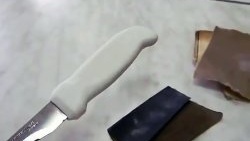
No worse than the factory one: Knife handle made of polypropylene pipe

2 useful homemade products from a plastic canister

How to make a shaped vegetable knife from a piece of PVC pipe
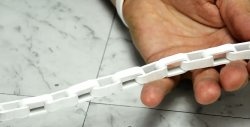
How to make a chain from PVC pipe

How to make a snow shovel from PVC pipe that will be stronger
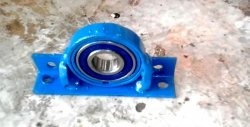
How to quickly make a bearing housing from a pipe
Particularly interesting
Comments (1)



